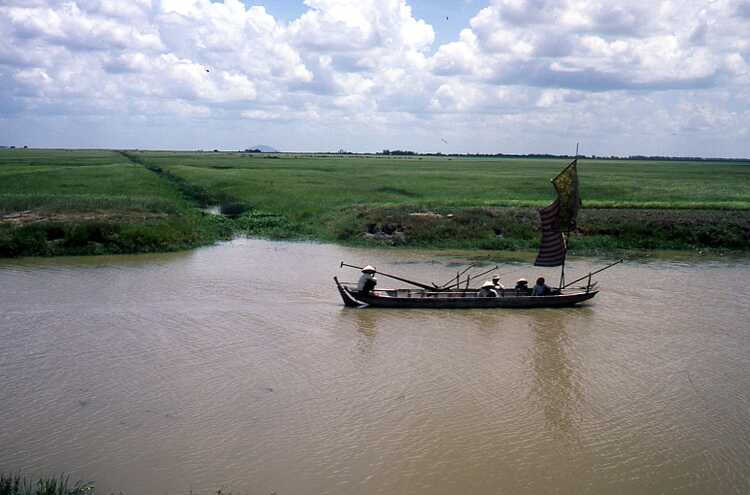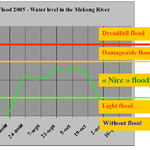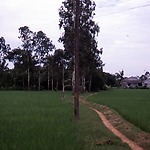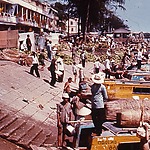The Mekong River plays a very important role in agriculture in the delta, which has not yet been reclaimed as polders for the most part, which means that the land can flood in the event of high discharges. The countries through which the river flows had plans to build a total of eleven new dams on the river and its tributaries. This is expected to significantly change the discharge of the river in the future, and with it the discharge of the river through the delta.
The Mekong River Commission has existed for many years. This is a partnership between Laos, Thailand, Cambodia and Vietnam. China and Myanmar participate as observers. The work of the Commission is largely supported by multilateral and bilateral donors, including the Netherlands. One of the activities of the Commission was the organisation of the Annual Mekong Flood Forum. From 2007 to 2010 I was a facilitator of these Forums, which included checking the submitted papers and presentations. This gave me a good insight into the regime of Mekong River and the changes that could be expected.
Vietnam is one of the largest exporters of rice in the world. A significant portion of the rice is grown in the Mekong Delta. Over the years, various master plans have been drawn up for the development of the delta. However, it often takes many years before a political decision is actually made on the basis of such plans. Every year during the Forum, I spoke with a Vietnamese expert about the state of affairs regarding the development of the delta. During the last Forum, he said to me:
"Mr. Schultz, we have decided on the development of the Mekong Delta."
I asked him: "Did your Government really decide politically?" He replied: "Yes, Mr. Schultz" and told me what the decision looked like in broad terms. The cities and villages would get safe dikes, as would the higher agricultural lands. The largest part of the delta would get submersible dikes. These are dikes that can normally withstand high water, but are overtopped during the peak period, when there is also the most sediment in the river. This provides the agricultural lands with fertile sediment during the flood.
In this context it is also nice that for the Mekong Delta a distinction is made between five different types of floods, starting with no flood, then comes small flood. The best is the nice flood. That is what the farmers want to see happen. Then there are two too big floods – the floods that cause damage and the worst, the floods with major damage and casualties. It is the only area in the world for which I have seen such a classification.
Around 2009, serious plans to build eleven dams in the Mekong River Basin were developed. A number of them are currently being implemented. It is expected that all eleven dams will indeed be built. As mentioned, this will lead to major changes in the regime of the river, with the discharge expected to become much more even. As a result, both the extremely high and extremely low discharges are expected to level off. Time will tell whether this will be beneficial or unfavourable for the Mekong Delta.




